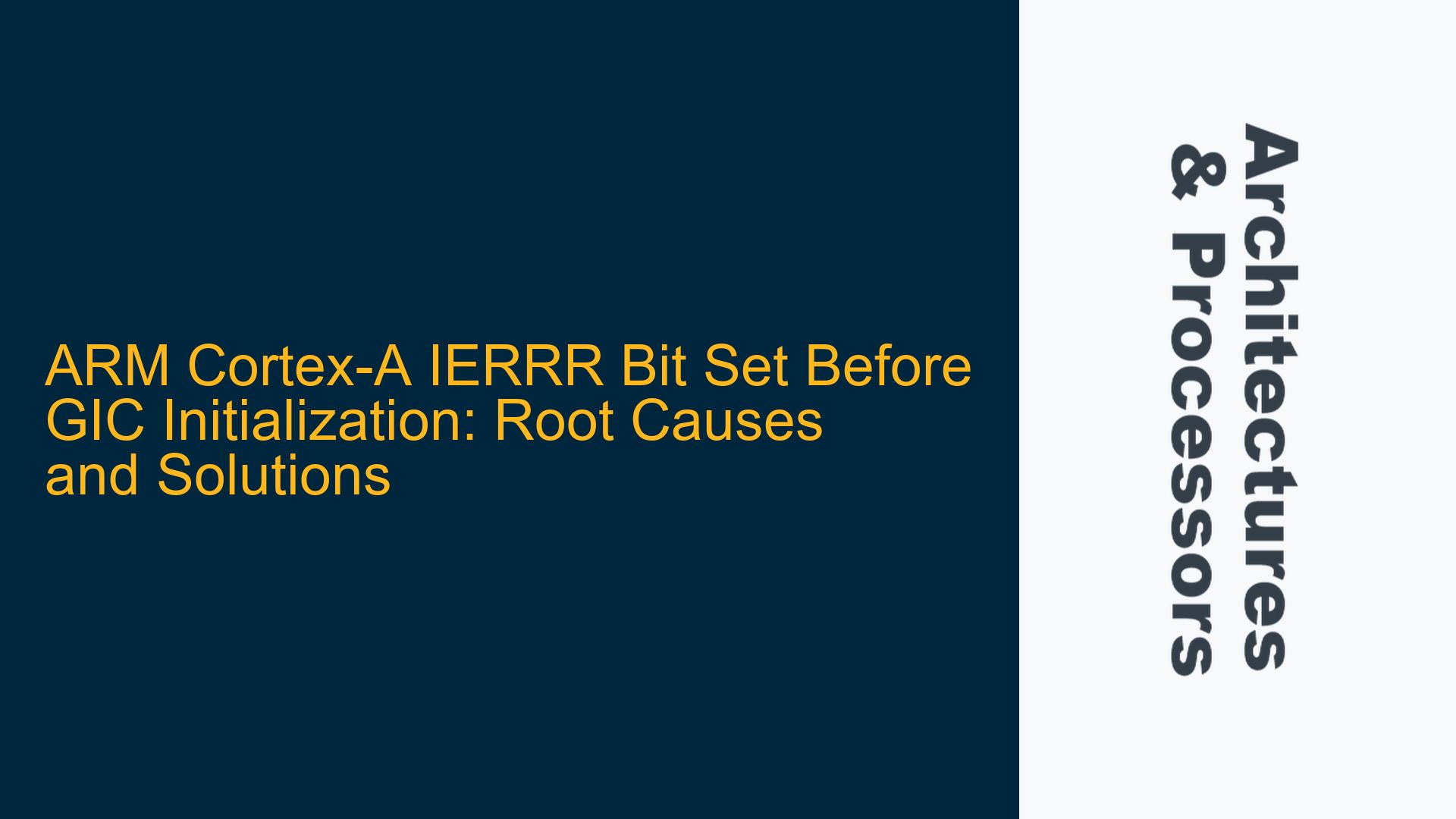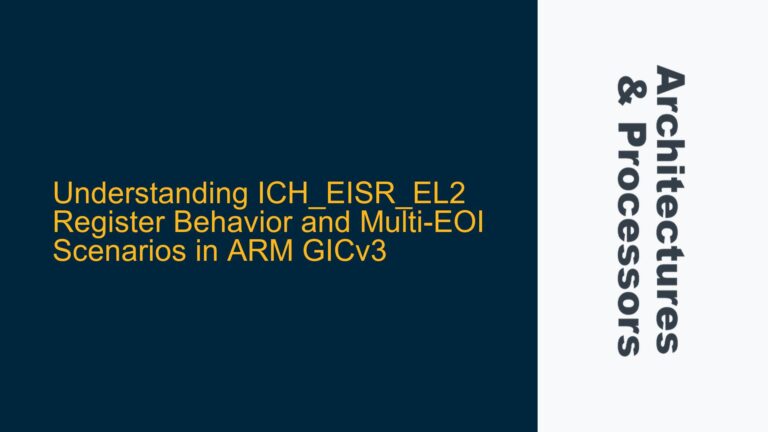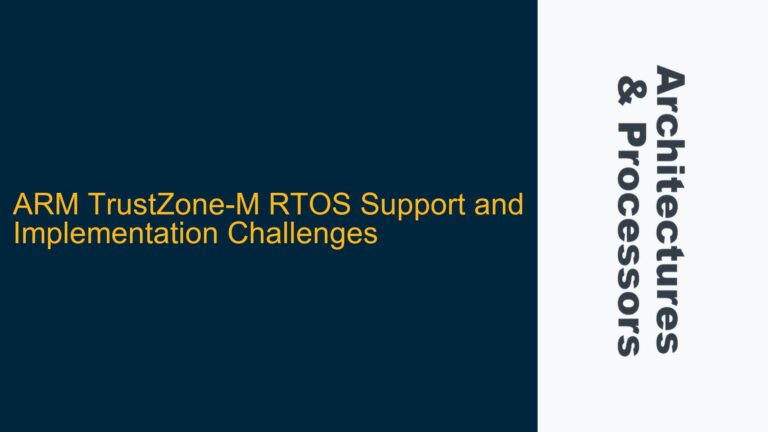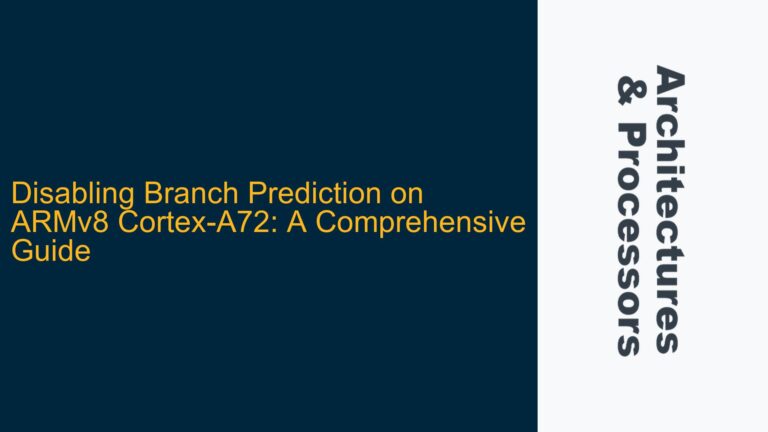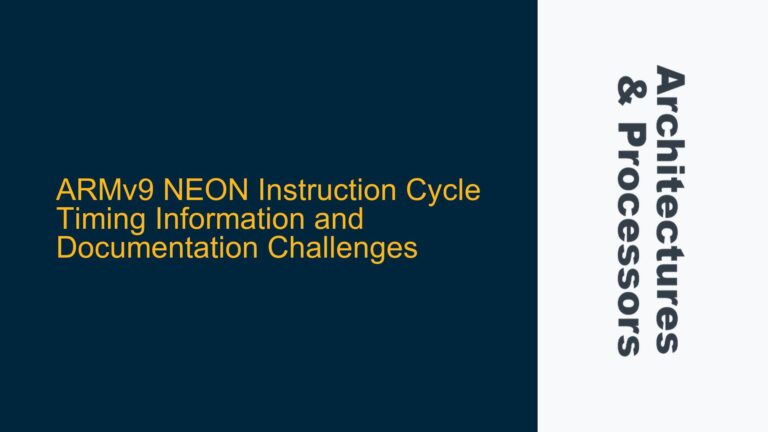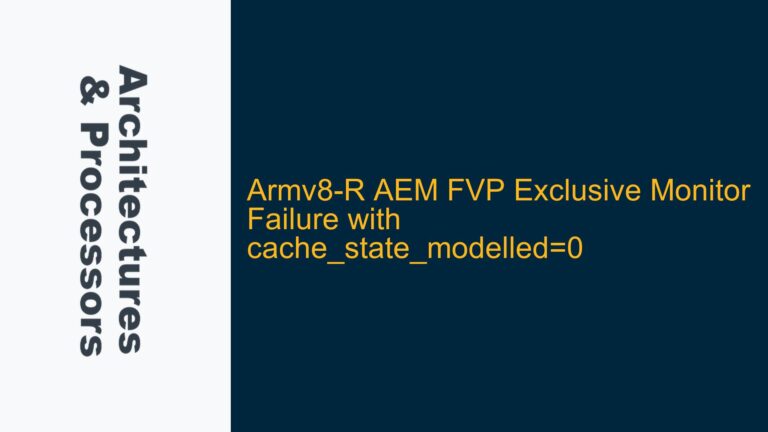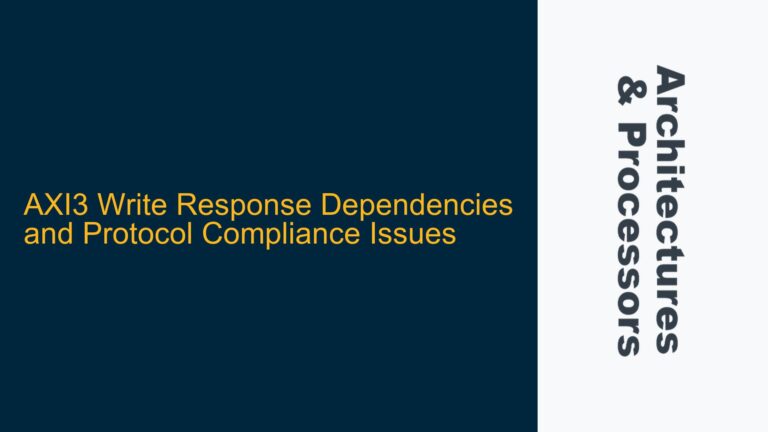ARM Cortex-A IERRR Bit Set Persistently Before and After GIC Initialization
The IERRR (Internal Error Reporting Register) bit being set persistently before and after Generic Interrupt Controller (GIC) initialization on an ARM Cortex-A processor is a critical issue that can indicate underlying hardware or software problems. The IERRR bit is part of the processor’s error reporting mechanism, which flags internal errors such as parity errors, ECC errors, or other system-level faults. When this bit is set before GIC initialization, it suggests that the error condition is present early in the boot process, potentially affecting the system’s ability to initialize the GIC and handle interrupts correctly. This issue is particularly concerning because it persists even after GIC initialization, indicating that the root cause is not resolved by the initialization sequence.
The IERRR bit is typically associated with the processor’s internal memory subsystems, such as caches, TLBs, or interconnect fabrics. When the bit is set, it implies that the processor has detected an error condition that could compromise system stability or data integrity. In the context of the described issue, the persistent setting of the IERRR bit suggests a hardware fault, such as a defective SPI SRAM, or a configuration issue related to voltage, current, or frequency settings. Alternatively, it could be caused by a software bug in the bootloader or low-level firmware that misconfigures the processor’s error reporting mechanisms.
Understanding the exact cause of the IERRR bit being set requires a detailed analysis of the system’s hardware and software configuration. This includes examining the SPI SRAM interface, the power delivery network, and the processor’s error reporting registers. Additionally, the timing of the error relative to the boot sequence and GIC initialization provides critical clues about the root cause. For example, if the IERRR bit is set immediately after power-on, it suggests a hardware issue, whereas if it is set after certain software operations, it may indicate a firmware bug.
SPI SRAM Voltage, Frequency, and Hardware Defects as Potential Causes
The persistent setting of the IERRR bit before and after GIC initialization can be attributed to several potential causes, with SPI SRAM voltage, frequency, and hardware defects being the most likely culprits. SPI SRAM is often used in embedded systems for its low latency and high-speed access, but it is sensitive to voltage and frequency variations. If the SPI SRAM is not supplied with the correct voltage or is operated at an unsupported frequency, it can cause data corruption or access errors, which may trigger the IERRR bit.
Voltage issues can arise from an unstable power supply or incorrect voltage regulator settings. For example, if the SPI SRAM requires 1.8V but is supplied with 1.5V, it may not function correctly, leading to errors that are flagged by the processor. Similarly, operating the SPI SRAM at a frequency higher than its rated specification can cause timing violations, resulting in data corruption or access failures. These issues are particularly problematic during the early stages of the boot process, when the processor is initializing its memory subsystems and configuring the GIC.
Hardware defects in the SPI SRAM itself can also cause the IERRR bit to be set. Defects such as faulty memory cells, broken address lines, or damaged control signals can lead to persistent errors that are detected by the processor. In some cases, these defects may be intermittent, making them difficult to diagnose. However, if the same IERRR bit is consistently set, it suggests a systematic issue that is likely related to a hardware defect.
Another potential cause is improper configuration of the processor’s memory controller or SPI interface. If the memory controller is not configured correctly, it may generate incorrect access patterns or fail to handle error conditions properly, leading to the IERRR bit being set. Similarly, if the SPI interface is misconfigured, it may cause data corruption or access errors that trigger the IERRR bit. These issues can often be resolved by reviewing the processor’s reference manual and ensuring that the memory controller and SPI interface are configured correctly.
Diagnosing and Resolving IERRR Bit Issues Through Hardware and Software Analysis
To diagnose and resolve the issue of the IERRR bit being set persistently before and after GIC initialization, a systematic approach is required that combines hardware and software analysis. The first step is to verify the SPI SRAM’s voltage and frequency settings. This can be done using a multimeter to measure the voltage supplied to the SPI SRAM and comparing it to the manufacturer’s specifications. If the voltage is incorrect, the power supply circuit should be reviewed and adjusted as necessary. Similarly, the SPI SRAM’s clock frequency should be verified using an oscilloscope to ensure that it is within the specified range.
If the voltage and frequency settings are correct, the next step is to check for hardware defects in the SPI SRAM. This can be done by running a memory test that writes and reads back known patterns to the SPI SRAM. If the test reveals errors, it suggests that the SPI SRAM is defective and should be replaced. Additionally, the SPI interface and memory controller configuration should be reviewed to ensure that they are set up correctly. This includes checking the timing parameters, addressing modes, and error handling mechanisms.
If the hardware checks do not reveal any issues, the focus should shift to the software, particularly the bootloader and low-level firmware. The bootloader is responsible for initializing the processor’s memory subsystems and configuring the GIC, so any bugs in this code could cause the IERRR bit to be set. The firmware should be reviewed to ensure that it correctly initializes the processor’s error reporting mechanisms and handles any errors that are detected. This includes setting up the appropriate interrupt handlers and error recovery routines.
In some cases, the issue may be related to the processor’s internal state or configuration. For example, if the processor’s caches or TLBs are not flushed or invalidated correctly, it could cause errors that trigger the IERRR bit. The processor’s reference manual should be consulted to ensure that all necessary initialization steps are performed correctly. Additionally, the processor’s error reporting registers should be examined to gather more information about the nature of the error. This includes the IERRR bit itself, as well as any related registers that provide additional context about the error.
Once the root cause of the issue has been identified, appropriate corrective actions can be taken. If the issue is related to voltage or frequency settings, the power supply or clock configuration should be adjusted. If the issue is due to a hardware defect, the defective component should be replaced. If the issue is caused by a software bug, the firmware should be updated to correct the problem. In all cases, thorough testing should be performed to ensure that the issue has been resolved and that the system is functioning correctly.
In conclusion, the persistent setting of the IERRR bit before and after GIC initialization is a complex issue that requires a detailed and systematic approach to diagnose and resolve. By carefully analyzing the SPI SRAM’s voltage and frequency settings, checking for hardware defects, and reviewing the bootloader and firmware, it is possible to identify the root cause of the issue and implement an effective solution. This ensures that the system operates reliably and that the processor’s error reporting mechanisms function as intended.
